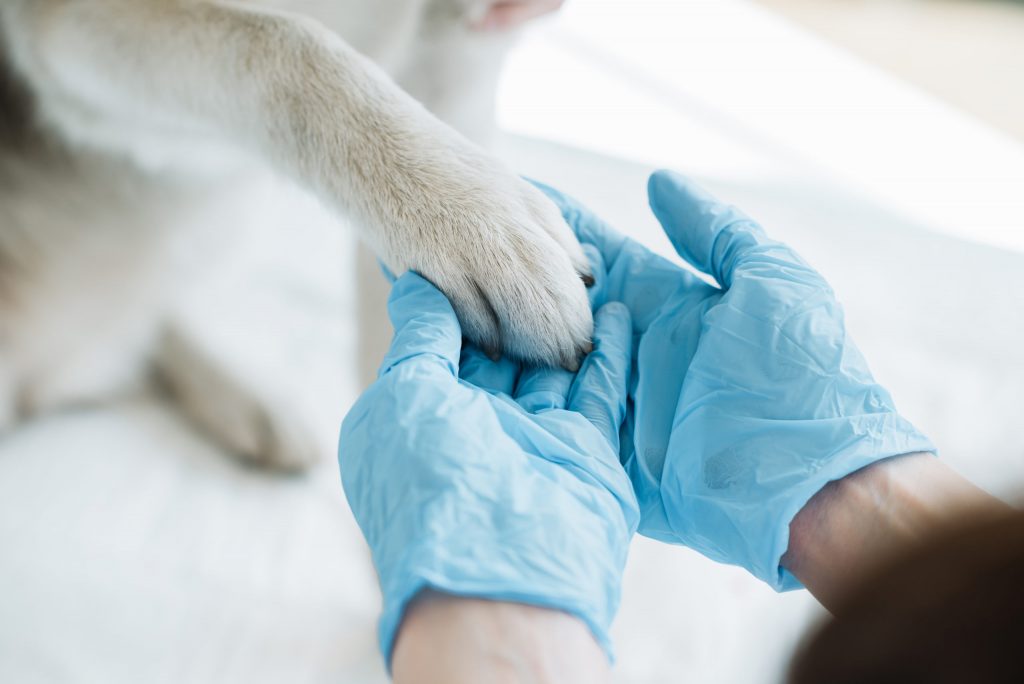Fleas are tiny, 2.5 mm long bloodsucking insects. Despite not having wings, they can jump a long way, which allows them to jump onto your pets and into your home. Animals and humans can share fleas. It might be difficult, but not impossible, to get rid of fleas once they have infested your dogs and home. Preventing fleas from ever entering your surroundings is the best approach to dealing with them. However, there are steps you may do to get rid of fleas permanently if you believe you have an infestation or have proof of it.
Fleas are parasites that enjoy living on animal fur. In the brief lifetime of a female flea, she can lay up to 50 eggs every day and up to 2,000 eggs. The eggs don’t hatch until the humidity and temperature of their habitat are just right. Heat and vibration both stimulate fleas. For instance, fleas can lay dormant in a vacant home for months, but once a family comes in, these tough little critters will start looking for a host and begin to feed on their blood.
How to Determine Your Pet Has Fleas
The first sign will be that your pet will scratch more frequently than usual. Your pet may itch an area of skin that is already irritated. Fleas can also be identified by the discolored ring around the bite. It’s possible that your pet’s fur contains tiny black “dots” that resemble dirt. Small, discolored lumps on the skin are indicative of flea bites, which have a distinctive bite pattern and location. The bites frequently appear in a line or group.

Skin infections and suffering follow broken skin. To reduce irritation and stop future itching, veterinarians typically recommend an oral, topically applied, or intravenously injected medicine. Antifungal medicine or antibiotics may be recommended if an infection has already set in.
When a pet consumes a flea that is carrying tapeworms, the pet becomes infected with tapeworms. Cats and other self-grooming animals are particularly prone to this. In addition to making you lose weight, tapeworms make you itchy in the back. If left untreated, tapeworms can cause nutritional loss, and eventually weight loss. Bowel blockage can happen as a result of severe infestations. Other signs include weakness, nausea, and stomach pain.
The majority of small animals (puppies and kittens) with a significant flea infestation experience flea bite anemia. These animals become anemic as a result of the fleas’ excessive blood consumption. Lethargy, an inability to tolerate physical activity, dark stools, dark blood in the vomit or feces, pale gums, and bruising of the skin are signs of flea anemia in dogs and cats. Veterinarians may advise intravenous fluids, antibiotics, and in extreme situations, blood transfusions to treat anemia.
The bacteria “Bartonella” is transmitted to cats by fleas, resulting in Cat Scratch Disease (CSD). Through a bite or scratch, infected cats can then spread the infection to other cats or people. Numerous illnesses, such as heart disease, inflammation of the eyes, and convulsions, are linked to bartonella. Lethargy, moderate fever, chills, swollen lymph nodes, and skin lesions are common CSD symptoms. Pets are given antibiotics for six weeks to three months to treat the illness. Encephalitis (brain swelling), fever, and excruciating muscle pain are more severe symptoms.
How to Get Rid of a Flea Infestation
Fleas must be eliminated at every step of their life cycle in order to eradicate an infestation. Only 5% of a flea’s life cycle is spent on a host animal, thus the environment needs to be taken care of in addition to your pets. Your pet can be freed of fleas and flea filth by using a flea comb. If you see any flea remains, remove them, collect the fur, place it in a garbage bag, and throw it away right away. Outside is the greatest place to accomplish this. Wash the comb in warm, soapy water after combing.
Shampoos, topical medications, and sprays can all be used to treat fleas on pets. Continue weekly shampooing until there are no longer any traces of adult (active) fleas or flea filth. Every few days, until there are no longer any indications of fleas or flea dirt in your home or on your pet, wash all pet bedding, bed covers, pet clothing, cloth toys, and human bedding and clothing in hot water. Use the highest heat setting to dry these items.
Thoroughly vacuum the carpets. Replace your vacuum bag right away. To avoid reinfestation, bagless vacuums should be emptied outside.
You can use diatomaceous earth (DE) throughout your yard in addition to on your pet, pet beds, and carpets. Buy only “food-grade” DE. Wear a mask while applying DE indoors, and keep kids and pets out of the area until it has been completely vacuumed. DE can irritate the lungs. To avoid a new infestation, repeat the treatment every 4-6 weeks to catch the next generation of fleas.
Avoid using harmful chemical pesticides, especially those from the isoxazoline class, as many pets will have tremors, lack of coordination, convulsions, and even death following exposure.

